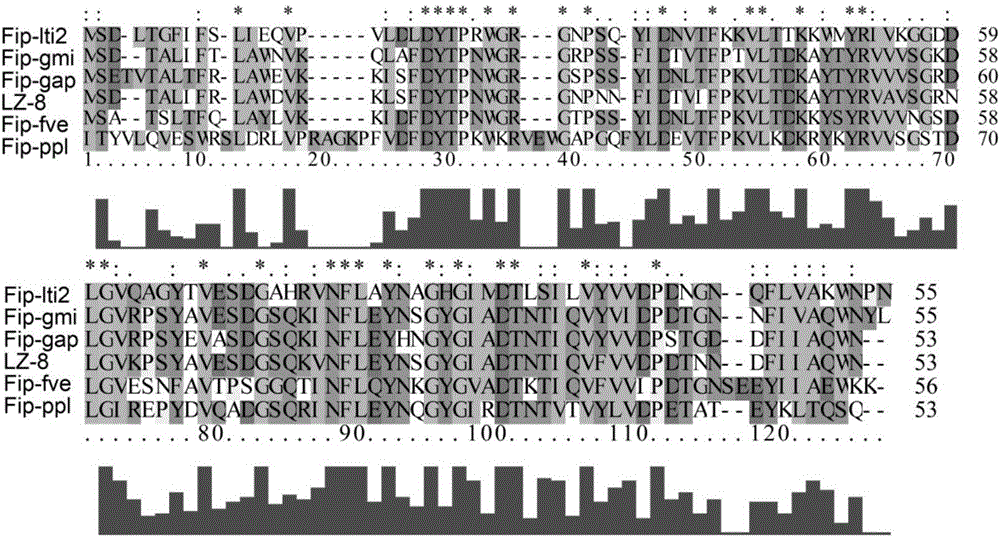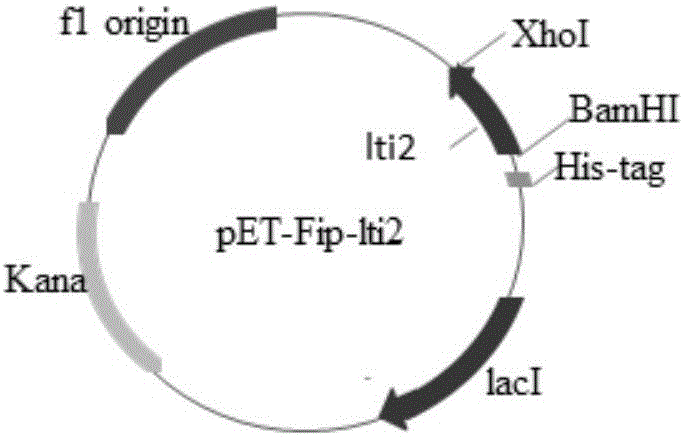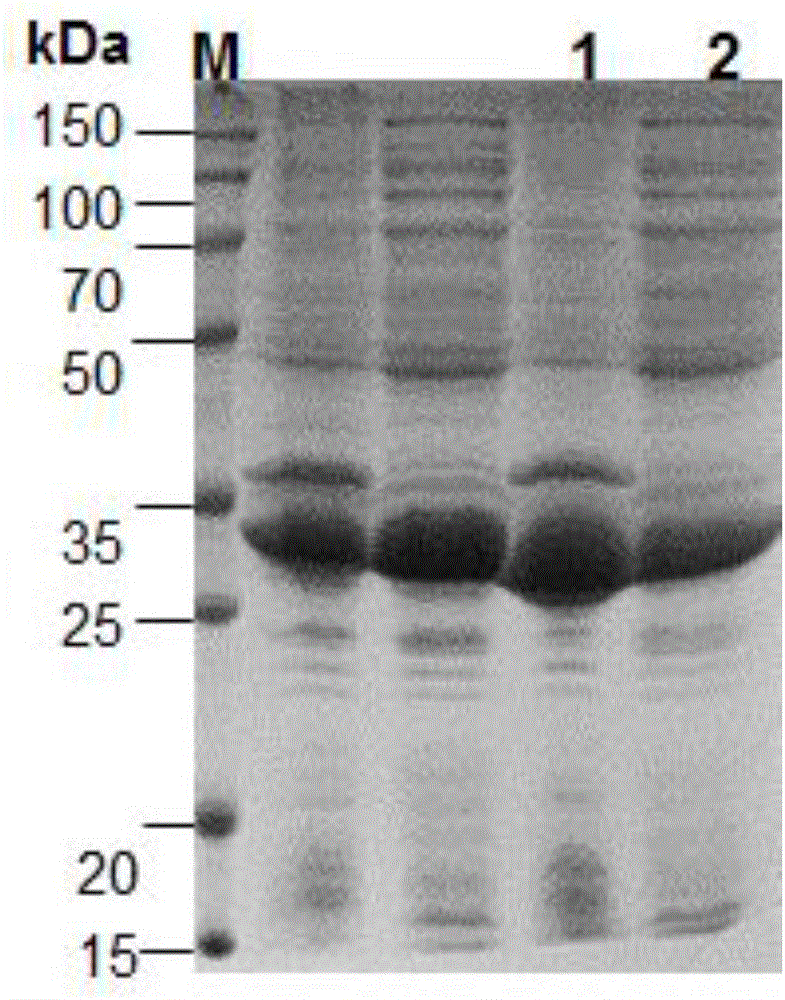Lentinus tigrinus immunomodulatory protein Fip-lti2 and preparation method and application thereof
An immunomodulatory protein, a technology of shiitake mushroom, applied in the directions of botanical equipment and method, biochemical equipment and method, application, etc., can solve the problem of discovering fungal immunomodulatory protein, etc., and achieve the promotion of spleen lymphocyte proliferation, expression, The effect of improving human immunity
- Summary
- Abstract
- Description
- Claims
- Application Information
AI Technical Summary
Problems solved by technology
Method used
Image
Examples
Embodiment 1
[0041] Sequence information and homology analysis of the immune regulatory protein Fip-lti2 gene of Lentinus edodes:
[0042] The cDNA sequence of the immunoregulatory protein Fip-lti2 of shiitake mushrooms is 339bp, and the detailed sequence is shown in SEQ ID NO.2. According to the cDNA sequence, the amino acid sequence of Fip-lti2 was deduced, with a total of 114 amino acid residues, a molecular weight of 12.8kDa, a theoretical isoelectric point (pI) of 5.49, an instability coefficient of 16.16, and an aliphatic coefficient of 89.65. For the detailed sequence, see SEQ ID NO .1 sequence shown.
[0043] The amino acid sequence of the immunomodulatory protein Fip-lti2 of Lentinus edodes was searched for protein homology in the Non-redundantGenBank database with the BLAST program, and it was found that it had 59% similarity with the immunomodulatory protein from G. microsporum. %, 54% similarity to immunomodulatory protein from G. applanatum, 57% similarity to immunomodulatory...
Embodiment 2
[0045] Synthesis and expression of the immune regulatory protein Fip-lti2 gene of Lentinus edodes:
[0046] Entrust Shanghai Sangon Bioengineering Co., Ltd. to complete the synthesis of the base sequence of the gene, construct the synthesized sequence on the cloning vector pUC57, transform the cloned strain DH5a, extract the plasmid, digest it with double enzymes (BamHI and XhoI), and agarose gel After electrophoresis, the Fip-lti2 gene fragment was recovered, connected to the pET32a vector digested with BamHI and XhoI with ligase (T4ligase), and the expression vector pET-Fip-lti2 was transformed into the expression strain Rosetta. Pick a single clone and culture it in LB liquid medium. On the next day, expand the strain at 1:50 to 800 mL, culture at 37°C until OD600=0.4-0.6, add 0.5mM IPTG, and induce expression at 37°C for 5h. The expression was induced by 0.5mM IPTG at 37°C for 5h. Such as figure 2 As shown, the Fip-lti2 gene fragment was constructed on the expression ve...
Embodiment 3
[0048] Isolation and purification of the recombinant immunoregulatory protein Fip-lti2 from Lentinus edodes:
[0049] Centrifuge at 8000rpm at 4°C for 5min to collect the induced expression strains, add 100mL disruption solution for ultrasonic lysis. Cracking conditions: temperature ice bath, power 60%, ultrasonic 2s, interval 2s, time 15min. Centrifuge at 12000rpm, 4°C for 15min, collect the supernatant and precipitate. SDS-PAGE detection to determine the expression form of the target protein. The target protein Fip-lti2 exists in soluble form. Purify through NI column, collect the flow-through and eluate, and check the protein purification effect by SDS-PAGE. Such as image 3 , 4 As shown, the induced protein was identified by SDS-PAGE, and the size was correct.
PUM
| Property | Measurement | Unit |
|---|---|---|
| molecular weight | aaaaa | aaaaa |
Abstract
Description
Claims
Application Information
 Login to View More
Login to View More - R&D
- Intellectual Property
- Life Sciences
- Materials
- Tech Scout
- Unparalleled Data Quality
- Higher Quality Content
- 60% Fewer Hallucinations
Browse by: Latest US Patents, China's latest patents, Technical Efficacy Thesaurus, Application Domain, Technology Topic, Popular Technical Reports.
© 2025 PatSnap. All rights reserved.Legal|Privacy policy|Modern Slavery Act Transparency Statement|Sitemap|About US| Contact US: help@patsnap.com



